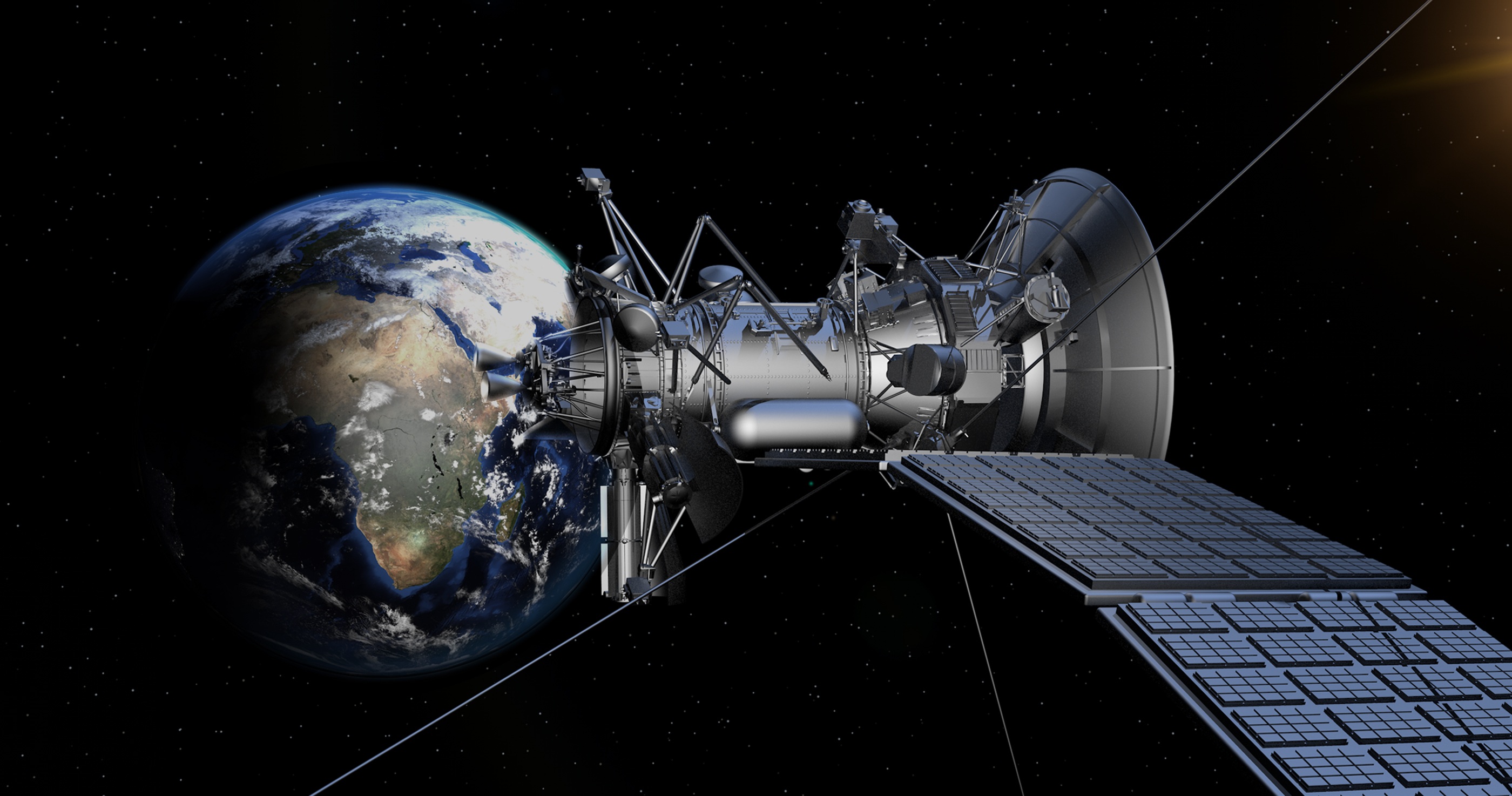Here’s how just four satellites could provide worldwide internet

In spite of what SpaceX and other companies suggest with projects like Starlink, you don’t need mega-constellations comprising thousands of satellites—and all the aggravations they cause—to provide global internet coverage to the world. We’ve known since the 1980s that if you’re okay with settling for a connection a notch below gamer-quality speeds (about a half-second lag), then continuous worldwide coverage is possible with a constellation of just four satellites placed at much higher altitudes.
But HughesNet and ViaSat, the world’s biggest satellite internet providers that operate at these orbits, don’t offer anything close to global coverage. Other satellite networks that provide remote sensing and navigation services also fall woefully short of that standard. What gives?
Unsurprisingly, the big obstacle is cost. Several factors work to degrade a satellite’s orbit. These include natural drag, perturbations in Earth’s gravity field, the interfering gravitational pull of the sun and the moon, and even pressure caused by solar radiation. To combat these problems, you need a huge amount of propellant on the satellite to consistently stabilize its orbit—an amount that usually doubles the satellite’s mass. Manufacturing, launch, and operational costs are just too high for the four-satellite trick.
A new study led by engineers at The Aerospace Corporation and published in Nature Communications proposes a counterintuitive approach that turns these degrading forces into ones that actually help keep these satellites in orbit. If it worked, it would mean just four satellites could provide continuous global coverage for a fraction of the cost.
Currently, the orbits for these satellites are elliptical, and forces from the sun and moon create instabilities which break the constellation apart over time. Patrick Reed at Cornell University and his colleagues wanted to make the orbits more circular, letting the satellites get by with fewer propulsive maneuvers and lower propellant requirements. And they wanted to do this in such a way that the satellites could still provide nearly global coverage.
The team ran simulations that looked at what types of orbital configurations could best turn degrading forces into ones that actually fostered a stable, circular orbit. Instances where, say, the sun’s gravity would normally break the constellation apart could now bind the constellation together. The simulations were for four-satellite constellations that would spend at least 6,000 days (16.4 years in orbit).
After analyzing the simulations using the Blue Waters supercomputer at the University of Illinois at Urbana-Champaign, the team found two models that could work. In one, the constellation completes an orbit in a 24-hour period, at an altitude of 22,000 miles, and achieves continuous coverage for about 86% of the globe. The other works on a 48-hour period at an altitude of 42,000 miles and covers 95% of the globe. Any areas that experienced outages would face no more than about 80 minutes of downtime a day.
Granted, the internet speeds would be slower because of the extra time it takes to send the signal from a much higher orbit. “For most people using data systems, however, an additional quarter-second delay is difficult to sense, since there are so many other delays in computers and data networks,” says Roger Rusch, the president of telecom consulting firm TelAstra.
In these systems, the satellites (each weighing about 1.2 tons) would need about 60% less propellant over the entire 6,000-day period than if they were orbiting in more conventional configurations, potentially reducing their mass by over one-half and making it much easier to build and launch them. It could also make room to install better instrumentation and power systems (high-altitude satellites need more power to beam signals back to Earth).
Reed says the work was motivated by a desire to let smaller countries or companies operate constellations that give near-continuous coverage. The argument goes that with costs down, it would be easier for these groups to build, launch, operate, and track just a few satellites in a higher orbit, versus a sprawling constellation of thousands in low Earth orbit.
Experts like Rusch are bullish about the new study’s findings: he says the capital and operating costs of a LEO satellite system are three to five times higher than those of a high-altitude system with the same capability. Astronomers and space debris experts who are nervous about the negative effects of projects like Starlink might also appreciate the concept.
Others are a bit more cautious. Anton Dolgopolov, a senior analyst with analytics and engineering firm Bryce Space and Technology, points out that LEO systems still have some powerful advantages—for example, they have an easier time ensuring coverage for communities near the poles. Besides, in a network made of hundreds to thousands of satellites, it won’t really disrupt service if a few fail to launch or work properly. And LEO satellites can be deorbited and replaced much more quickly.
In other words, the new models are just theoretical possibilities, interesting though they may be. In the real world, engineering and economic obstacles might dim hopes for an easy solution.
Correction 1/20: This post has been updated to correct a technical error regarding the design of the new constellation.
Deep Dive
Space
How to safely watch and photograph the total solar eclipse
The solar eclipse this Monday, April 8, will be visible to millions. Here’s how to make the most of your experience.
The great commercial takeover of low Earth orbit
Axiom Space and other companies are betting they can build private structures to replace the International Space Station.
How scientists are using quantum squeezing to push the limits of their sensors
Fuzziness may rule the quantum realm, but it can be manipulated to our advantage.
Stay connected
Get the latest updates from
MIT Technology Review
Discover special offers, top stories, upcoming events, and more.